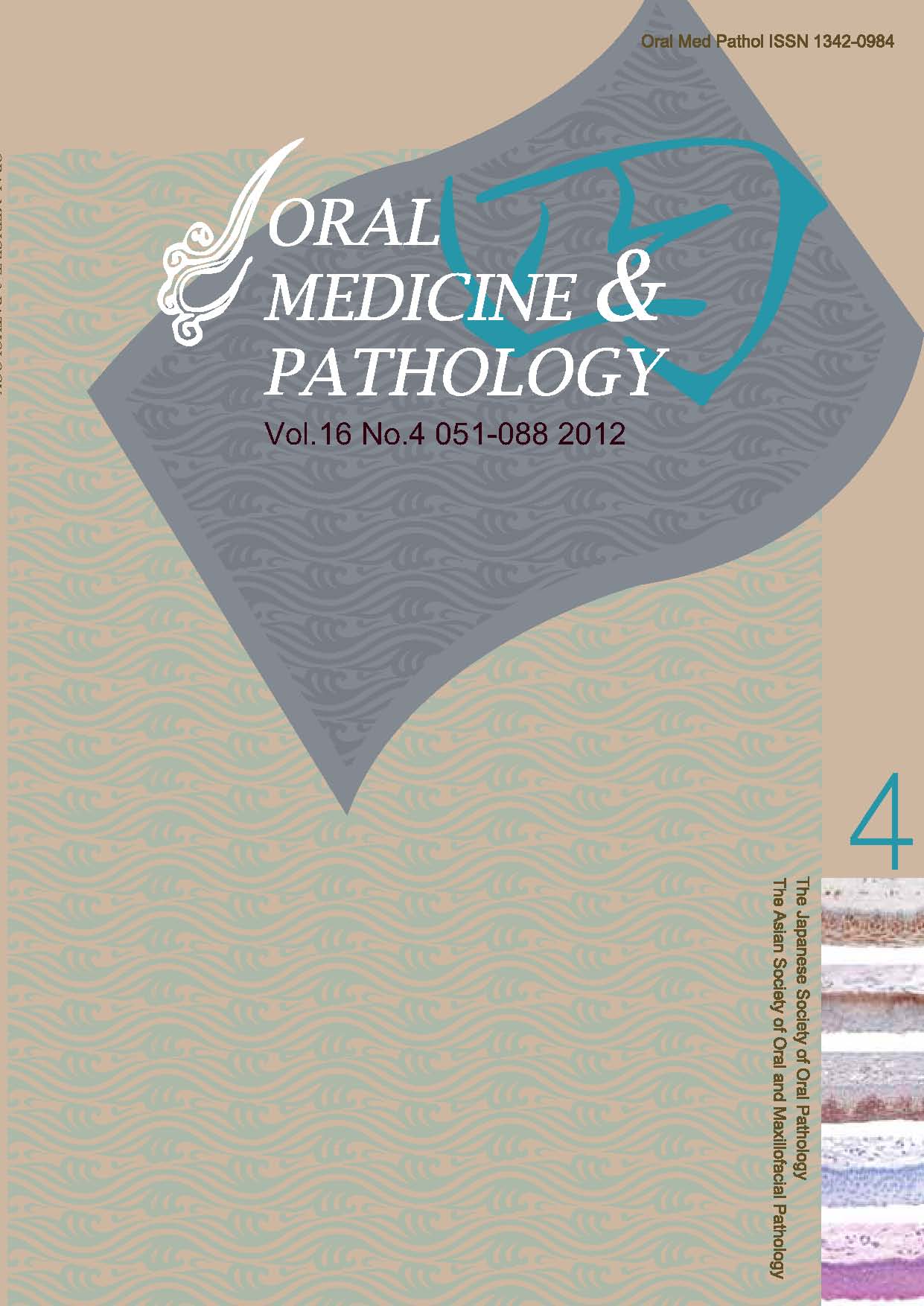Background: Oral cancers with sequential backgrounds have been increasing in number in recent years in Japan, although their disease entity is not always well defined. To characterize their clinicopathological nature, we compared oral cancers having sequential backgrounds with those lacking an apparent sequential history. Methods: From primary oral cancer cases filed in Niigata University Hospital, tongue cancer cases were selected and analyzed for their clinical factors (sex, age, location, TNM stages, local recurrences, and multiple occurrences), and for oral environmental factors (smoking and drinking habits, as well as the wearing of dentures or crown bridges). The histopathological characteristics were examined using surgical specimens. Results: Using samples from a 38-year period, 1970 to 2007, we were able to confirm 119 cases of squamous cell carcinoma of the tongue. Based on the clinicopathological analyses, we separated them into two categories:
de novo type and sequential type. The latter was characterized by its superficial spread associated with precursor lesions, while the former appeared as an exophytic tumor mass with intrinsic growth and ulceration, without associations with a precursor lesion in the vicinity of the main cancer foci. There were 44
de novo types (28 males, 16 females, average age 54.0 years) and 75 sequential types (38 males, 37 females, 62.1 years). Clinically, there were no statistically significant differences in age, sex, location, local recurrence, multiple occurrence, and distant metastasis between the two types, although sequential types were found more frequently in older females. Tumor sizes of sequential types were smaller than those of
de novo type (
P<0.05), and they had obviously less cervical lymph node metastasis than did
de novo types (
P<0.001). In addition, smoking and drinking habits were not as prevalent among sequential type female patients as among
de novo type patients (
P<0.001). Conclusion: The findings indicated that two different disease categories of oral squamous cell carcinoma could be identified. The sequential type, a newly-recognized one, frequently arises in older female individuals who report no conventional risk factors, such as smoking and drinking. This type has the better prognosis. Clinical interventions should distinguish between the two types.
View full abstract
